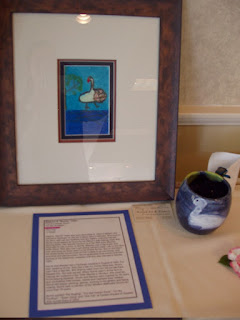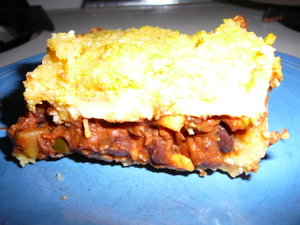| Rating: | ★★★★★ |
| Category: | Books |
| Genre: | Nonfiction |
| Author: | Van Dyke, Mahan, Sheldon and Brand |
The creation, including the earth, is not to be well treated because it is sacred or because it should be worshiped, but because God made it and called it good (Genesis 1), and its goodness is independent of human utility.
-- Redeeming Creation
Caring for the environment is a moral issue. How we interact with the world around us, not just with other people but with the stuff of the earth, is not a matter of right, but of responsibility. That, at least, is the premise of the book
Redeeming Creation, coauthored by Fred Van Dyke, David C. Mahan, Joseph K. Sheldon, and Raymond H. Brand. The authors believe that without a solid ethical foundation underpinning our behaviors, as well as the policies put in place to police these behaviors, we'll find that we're talking one way and walking another. The book explores various ethical foundations that have been proposed to support environmentalism, then proceeds to test those foundations as well as the logical end points that they lead to. They conclude that the only solid ethical construct is one which includes God as creator, sustainer, and redeemer.
Ethics -- do we Value ecology?
In order to treat the environment as though it has value, one must first believe that it does. What gives it value is at the heart of any environmental ethic.
To get to the root of this issue, the authors drive all the way back to creation. They explore several ancient creation stories, focusing primarily on those of the Near East. They tease out the distinctions between the stories of the Babylonians, Mesopotamians, Greeks, and Hebrews and distinguish the purposes presented in each story for the creation of both Earth and those that live upon her sphere. They also address the more modern creation story of evolution as well as touch upon other spiritual attributions of value (such as those arising from pantheism and pan-psychism).
In the end they determine that many modern day valuation systems put mankind as the determining instrument of measurement, to which they conclude, “The making of humanity into the measure of all use and value must, in the end, be accompanied by a blatant disregard for nonhuman life.” They flesh this out with examples of policy and practice in the National Parks of the United States, showing that what sounds like a reasonable environmental practice at the outset often ends up doing more harm than good.
Theology -- where's God on ecology?
Believing that a Biblical view of God is at the heart of a sound ethic regarding ecology, the authors proceed to flesh out the theology that underpins that ethic. Much of what they have to say carries a distinct flavor of Schaefferian thought (as outlined in Francis Schaeffer's book,
Pollution and the Death of Man). The authors neatly and clearly flesh out several ideas that Schaeffer comparatively only glanced across: God is transcendent, God has called all creation "good" (thereby giving it value), humans are inseparably linked to creation, mankind is fallen (and this affects creation), and God has made a covenant of redemption not only with mankind but with all of creation.
Though many ancient creation stories tell of gods who fashioned the earth out of the stuff around them (or in some cases, out of the flesh of other gods), only the Hebrew God created the world out of nothing that had existed before. He remains separate from creation (transcendent), and creation gains value not because it is made of the flesh of god, but because God said it was "good." God ascribed value to creation. God said each part was good.
[As an aside, I'd like to point out that this is critically important theology in terms of getting Christians to think positively about the environment. Many Christians that poo poo environmentalists as a bunch of hippie tree-huggers have an underlying belief that caring for the environment means ascribing value to created things because they have
inherent value. In other words, they fear that being an environmentalist means assenting to the belief that plants and animals (etc) have value because they contain spirits themselves (animism) or because they are a part of a greater being (pan-psychism - the Universe is sentient) or because they are spirits in their own right (pantheism). Many Christians refrain from addressing the issue of the environment entirely because they are fearful that these non-Christian belief systems are the only reasons one would care for the environment. Reminding them that God is distinct from creation, but has ascribed value to it, is an essential piece in helping Christians (especially older Christians who lived through the "hippie era") see that environmentalism is a God issue and not a domain reserved only for hippies and tree huggers.]
When God made people, he made them from the stuff of the earth, from the dust of the ground. Humans are inseparably linked to creation, not just because they are created beings along with the rest of creation, but because they were fashioned out of the very earth itself. [Again, notice that not even humans were made from the stuff of God, but the stuff of earth. Even humans don't have inherent value, but rather their value comes from God who said they were "good."]
But, according to the Biblical record, mankind fell; they sinned against God. Because of this, not only mankind has suffered, but all of creation as well. There's an interesting passage in Isaiah that reads, "The earth lies polluted under its inhabitants; for they have transgressed laws, violated the statutes, broken the everlasting covenant. Therefore a curse devours the earth, and its inhabitants suffer for their guilt." (Isaiah 24)
But God has brought about a new covenant, one that not only brings healing to humans, but to the earth as well. God is redemptive and though the Bible is very clear about the redemption brought to mankind, it is also clear that, "God was pleased to reconcile to himself all things, whether on earth or in heaven, by making peace through the blood of his cross." (Colossians 1) And, the authors point out, God has called his people, who he has redeemed, to be agents of redemption themselves, not only to other people but to all of creation. As stewards of God's creation, they are not to abuse the land and its inhabitants, but as Jesus washed the feet of his disciples, exemplifying for them a servant leadership, so too are God's people to be servants of God's creation, caring for it as stewards for its true owner.
Response -- individual and corporate responses to ecological problems
In order to recommend a response to the environmental ills of our age, the authors first described the problems at issue. They organized these into three main categories: 1) population, 2) consumption vs. sustainability and 3) pollution and waste -- the second two being aggravated by the growth of the first. They explore the Biblical record, the historic record, and the evidence we can see today, all of which point toward mankind being behind many of the ills under which the earth currently groans. And we also suffer, along with the rest of creation, as a result of these ills. The consequences are ecological, medical, economic, cultural, and aesthetic.
From there they address what they believe are appropriate Christian responses at an individual level as well as from the corporate levels of families and churches. They even address a national response, specifically in terms of public policy and private-property law.
As individuals, we need to seek information in order to keep abreast of the issues. We should be interacting with nature in order to keep a personal relationship with it. And we should be willing to take sacrificial steps to deal with environmental issues. As families we can make decisions regarding heating, vacations, and transportation, among other things, that can make a corporate difference. Within churches we can be teaching a Biblical view of creation as well as using our buildings and yard space in a way that is both environmentally sound and physically appealing to neighbors.
At a national level, the authors believe the Forest Service is an important outward expression of public environmental policy. They list several problems within the service in recent years, and challenge forest service workers to put the needs of nature before chances for advancement (in cases when the two are in conflict). And some private-property laws need to be re-addressed, they say, as unfair negative burdens are placed upon the masses while positive monetary rewards are reserved for the private land owners. (A quick example is the rewards to the property owner of a gold mine and the negative affects to all those downriver as dangerous chemicals are dumped into a city’s water supply as a result.)
Redeeming Creation
The authors are firm, clear, and concrete in their arguments. They're honest about some of the abject failures that the church has perpetrated upon the environment, but they are of great hope that only a sound Biblical ethic can address the environmental problems that humanity faces in this day and age.
I was impressed with both the breadth and depth of this book as well as by the rock solid belief these authors hold that a proper Christian ethic towards the environment is the only hope for true restorative change on earth. I've read several books now regarding Christianity and the environment and I’d say that a common theme among them is that the Bible does indeed have something to say on the issue of caring for the earth. But
Redeeming Creation goes further. Not only does the Bible have something to say, but God’s plan, as laid forth in the Bible, has never been for mankind only, but has always included all of his creation, from “In the beginning,” to “It is finished.”



























